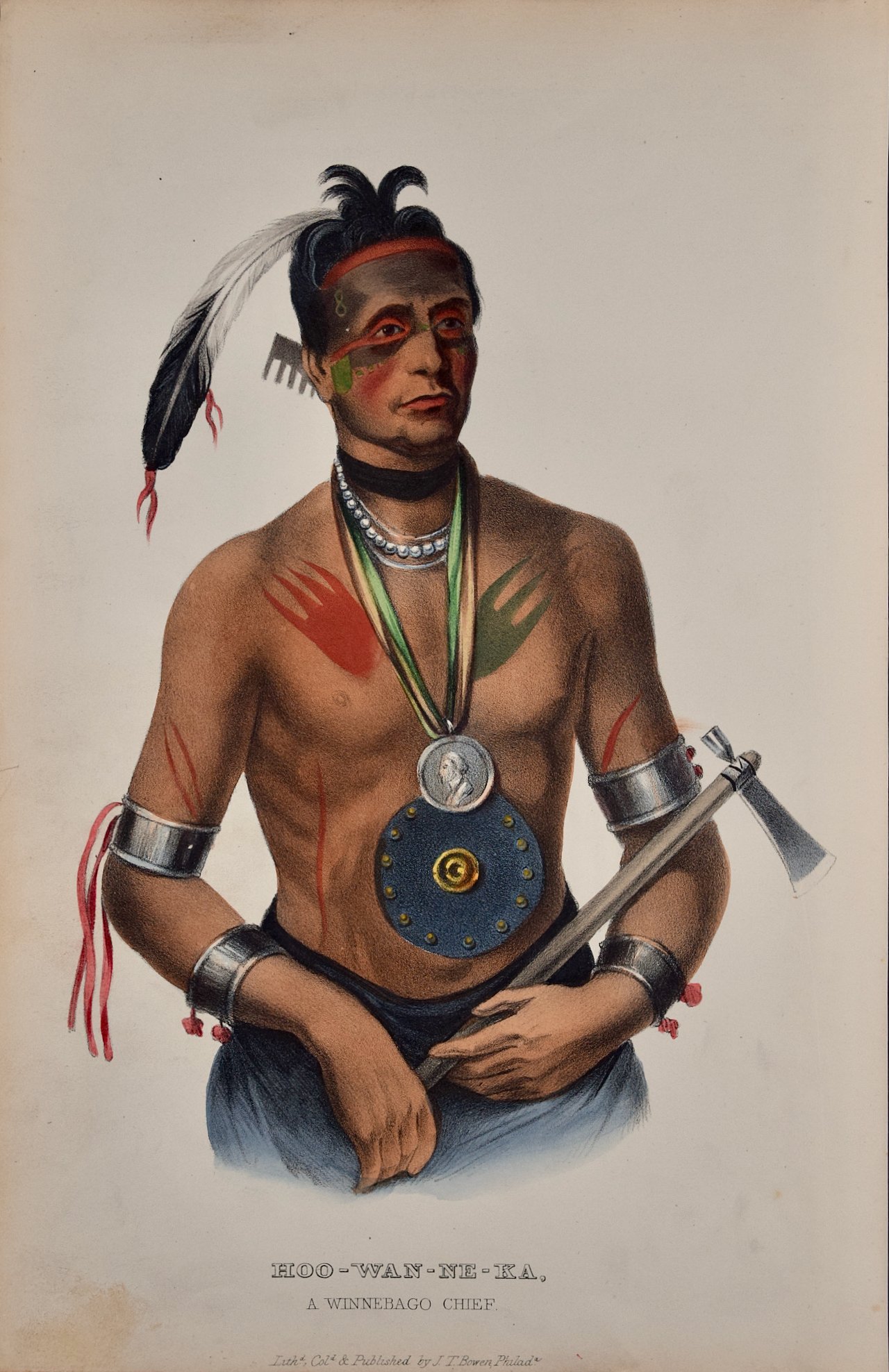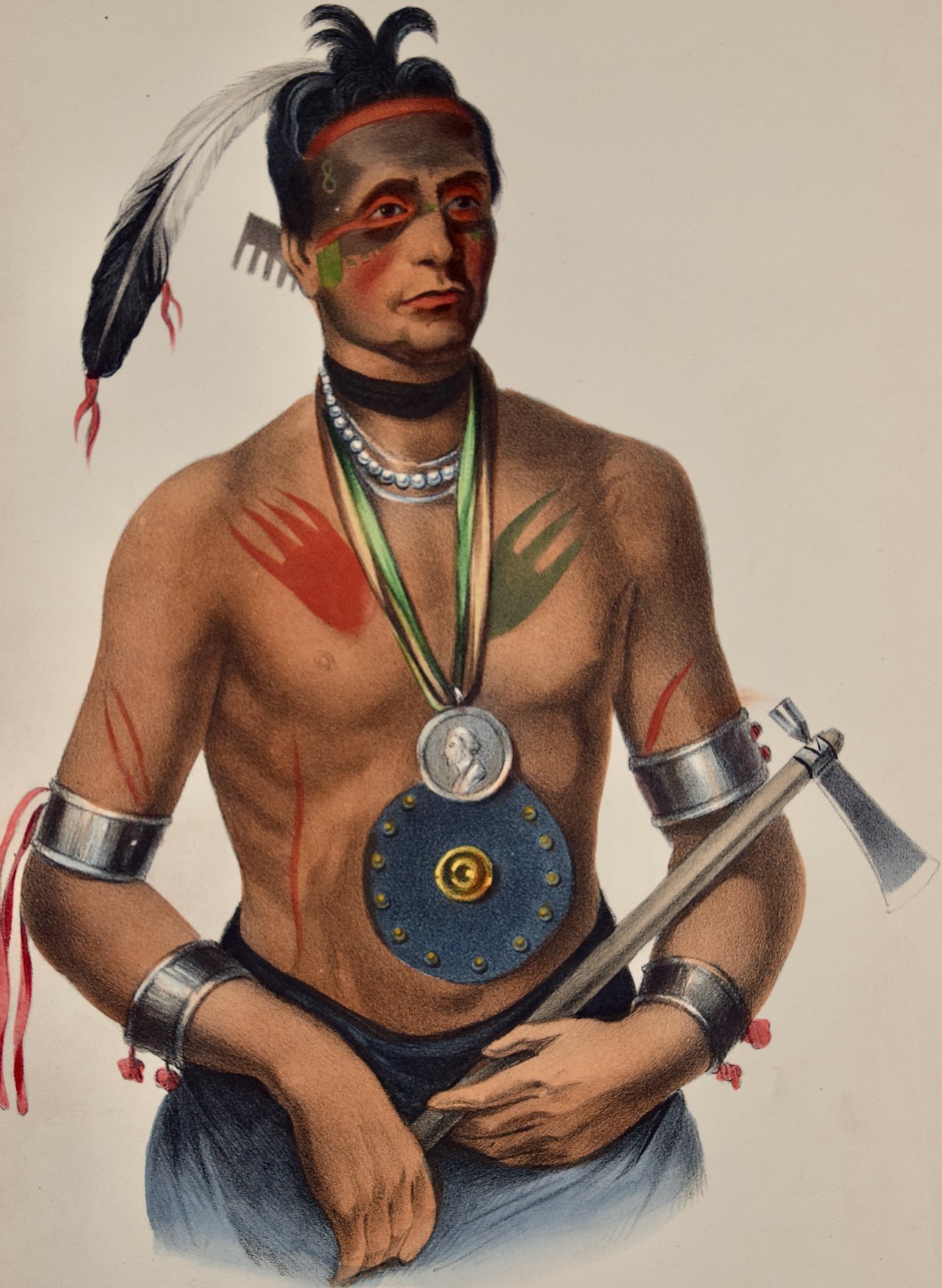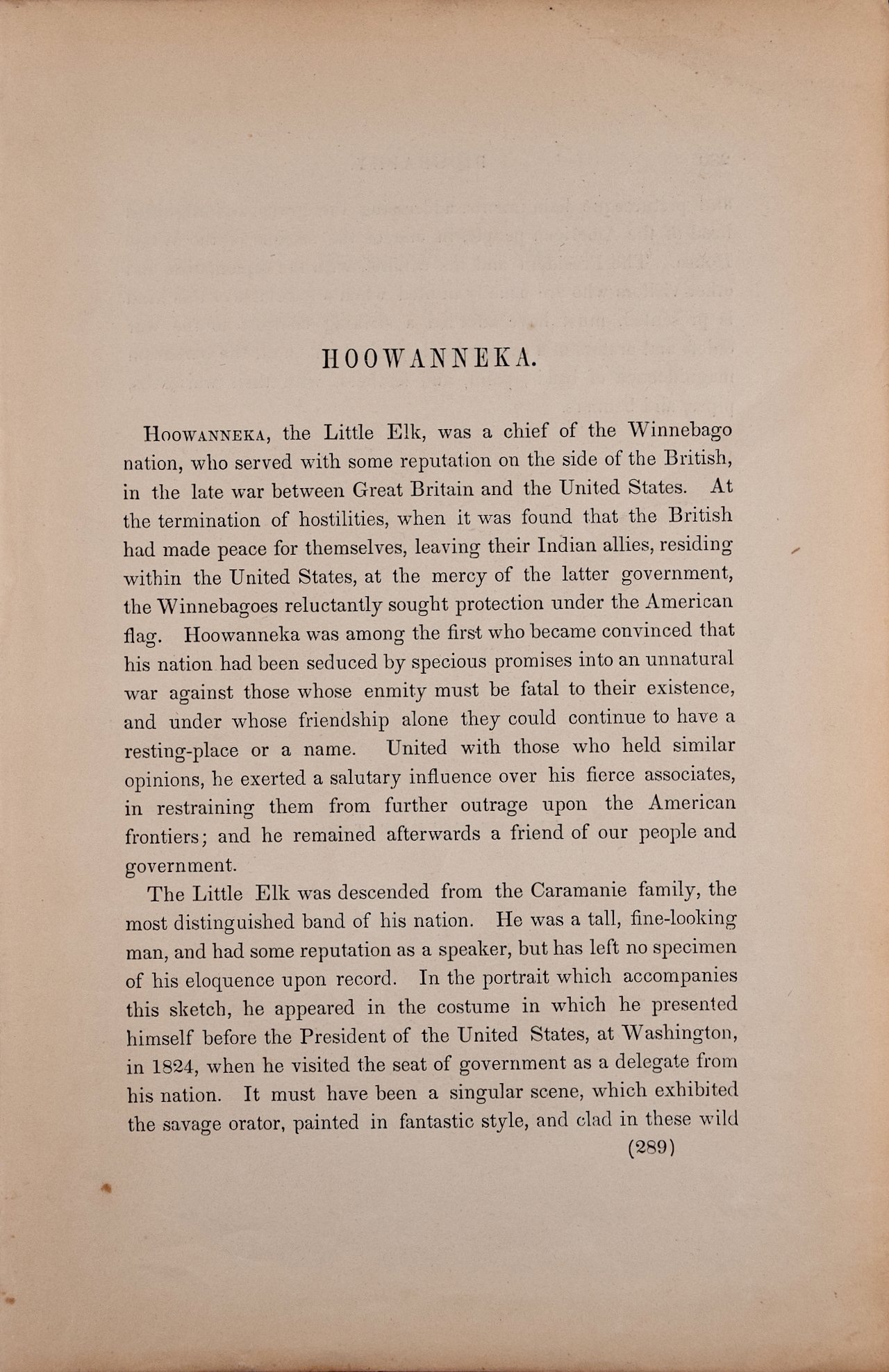For her portrait Po-Ca-Hon-Tas is wearing a western style dress and is holding a drooping flower. Her hairstyle, dress and features have been depicted as that of a contemporary white woman. This is because the portrait is based on the part myth and part real early 17th century Pocahontas, who was the daughter of Chief Powhatan. She was brought to England by the English Puritan settlers and became a celebrity, reaching princess status. She married an English tobacco farmer named John Rolfe and eventually helped end a war between her tribe and the English settlers in America.
This original McKenney and Hall hand-colored lithograph is printed on a sheet measuring 10.5" high and 7.5" wide. It is presented in a cream-colored suitable for framing mat. The mat measures 14" high and 10.88" wide. There are a few small spots in the margins and a larger focal area of discoloration at the lower edge of the sheet, hidden by the mat. The portrait is otherwise in very good condition.
Col. Thomas J. McKenney was Superintendant of The Bureau of Indian Affairs from 1816 until 1830. He was one of a very few government officials to defend American Indian interests and attempt to preserve their culture. He travelled to Indian lands meeting the Native American leaders. He brought with him an accomplished artist, James Otto Lewis, who sketched those willing to participate. A large number of the most influential Indian chiefs and warriors were later invited to come to Washington in 1821 to meet President Monroe. McKenney commissioned the prominent portrait painter Charles Bird King, who had a studio in the capital, to paint these native American leaders, who chose the costumes they wished to wear for the sitting. The magnificent resultant paintings were displayed in the War Department until 1858, and were then moved to the Smithsonian Institute. When Andrew Jackson dismissed McKenney in 1830, he gave him permission to have the King portraits as well as some by other artists, including George Catlin and James Otto Lewis, copied and made into lithographs, in both folio and octavo sizes. McKenney partnered with James C. Hall, a Cincinnati judge and novelist to publish the lithographs and the text written by Hall. The work was extremely expensive to create and nearly bankrupted McKenney, as well as the two printing firms who invested in its publication. The resultant work gained importance when Catlin's paintings were destroyed in a warehouse fire and Charles Bird King's and James Otto Lewis’ portraits were destroyed in the great Smithsonian Museum fire of 1865. The McKenney and Hall portraits remain the most complete and colorful record of these pre-Civil War Native American leaders.
The folio and smaller octavo sized hand painted lithographs remain prized by collectors and institutions, many of which are held by major museums and collections, including the Library of Congress and the Smithsonian Institute.
































